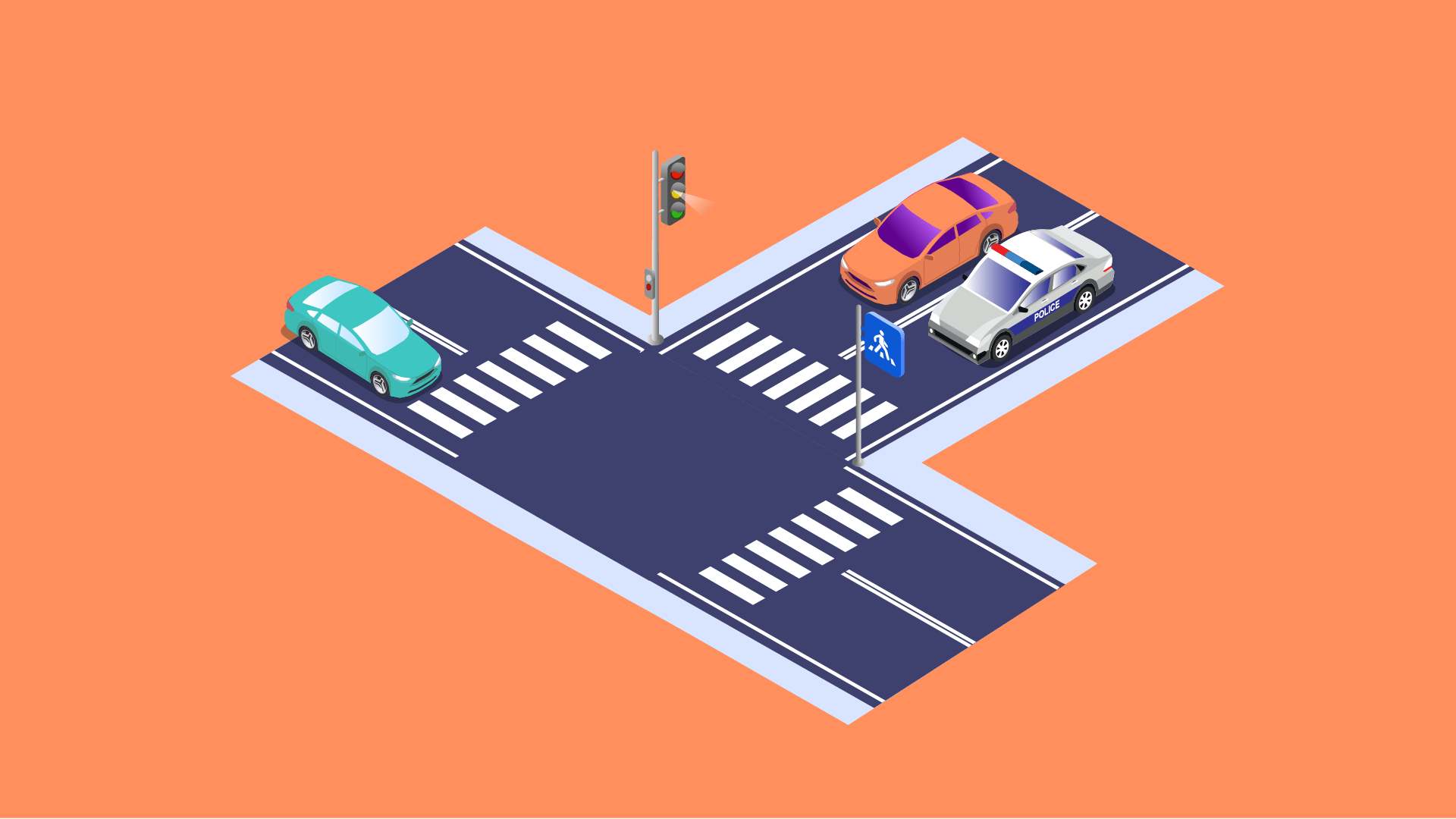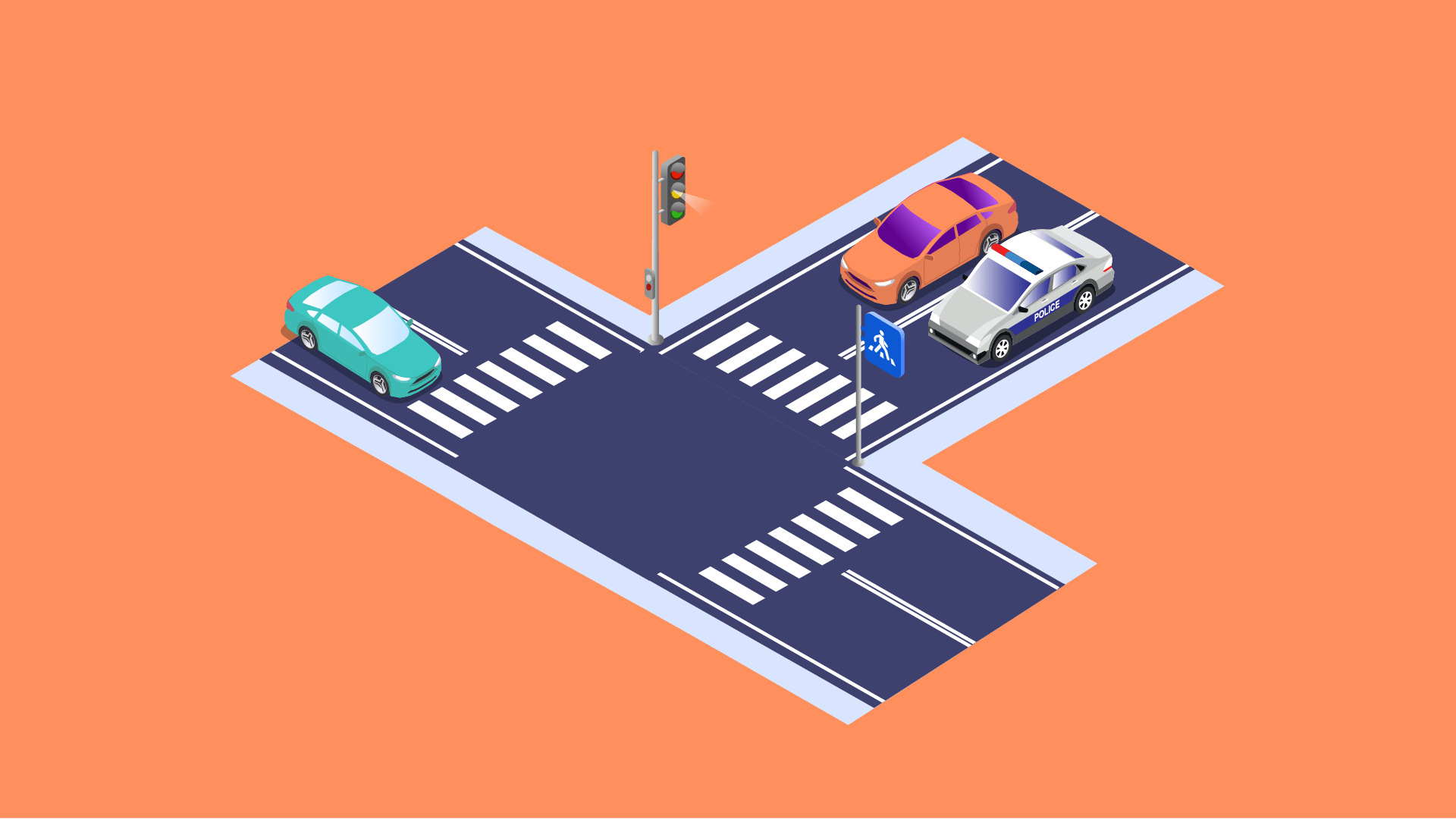Traffic Light Scenarios: Pelican Crossing Light Guide In UK.
Pelican crossings are also known as Pedestrian Light Controlled Crossings. They provide a safe passage for pedestrians across busy streets. They feature traffic lights and a system allowing pedestrians to activate the crossing when required.

Contents
- What Is A Pelican Crossing?
- Understanding Pelican Crossing Lights: Red, Amber, Flashing Explained
- Blue Flashing Beacon: Which Vehicle Uses It?
- Green Flashing Beacon: What Type of Emergency Vehicle?
- Flashing Beacons on Dual Carriageway: A Quick Guide
- That’s A Wrap!
- FAQ
Welcome, new drivers! Becoming a confident driver is a journey that requires mastering various aspects of road safety. Understanding the signals at pelican crossings is a crucial component of this learning process. In this guide, we'll highlight the meanings of the different pelican crossing lights. This will ensure you navigate these intersections with confidence and ease.
What Is A Pelican Crossing?
A Pelican crossing is a type of pedestrian crossing commonly found on roads. It is abbreviated as "Pedestrian Light Controlled Crossing." It's designed to facilitate the safe passage of pedestrians across busy streets. Pelican crossings are equipped with traffic lights. They also have a system that allows pedestrians to activate the crossing when they want to cross the road.
Pelican crossings play a crucial role in ensuring safety. They regulate the orderly movement of traffic at pedestrian crossing points. It benefits both pedestrians and drivers. Understanding the signals at Pelican crossings is essential for all road users. It promotes a safe and efficient flow of traffic.
Understanding Pelican Crossing Lights: Red, Amber, Flashing Explained
1. Red Light: Stop and Wait
When you encounter a red light at a pelican crossing, it signifies a universal directive: stop. This uncompromising signal requires drivers to come to a complete halt, leaving no room for ambiguity. The red light is a non-negotiable rule. It is established to prioritize the safety of pedestrians. Especially for those who are in the process of crossing the road. By adhering to this mandate, drivers contribute to a secure environment. It allows those on foot to traverse the crossing without the risk of vehicular interference.
This red light command serves as a critical pause in the traffic flow. It ensures a designated period for pedestrians to safely navigate the crossing. It stands as a testament to the shared responsibility of road users. This emphasizes the importance of patience for the overall well-being of everyone on the road.
2. Amber Light: Prepare to Stop
For new drivers, encountering an amber light at a pelican crossing is a crucial moment. It requires careful consideration and attention. Unlike the green light that grants permission to proceed, the amber light serves as a warning. It signals that the traffic signal is on the verge of changing. It's not an encouragement to accelerate. Instead, it's a clear instruction to decelerate and prepare to come to a complete stop. This phase demands a heightened level of attention. Drivers must acknowledge the impending alteration in the signal and respond with a controlled reduction in speed.
The amber light, therefore, acts as a cautionary measure. It promotes a safe transition between the green and red phases of the traffic signal. It offers a brief window for drivers to assess their surroundings. It ensures that pedestrians have ample time to complete their crossing before the signal switches. Recognizing the nuanced role of the amber light is fundamental for new drivers. It helps in cultivating a mindset of alertness and adherence to traffic regulations.
3. Flashing Amber Light: Proceed with Caution
Encountering a flashing amber light at a pelican crossing often leaves new drivers puzzled. But understanding its significance is crucial for safe navigation. When the amber light is flashing, it indicates that the crossing is in a "standby" mode. At this point, pedestrians have completed their crossing, and the traffic signal system is in a transitional phase. For drivers, this means a nuanced approach — the roadway is not entirely clear, but caution is warranted.
In this scenario, drivers should proceed with caution, recognizing that the lights may change at any moment. While pedestrians have finished crossing, the flashing amber light serves as a warning. It indicates that the signal is in flux, preparing for the next cycle. This moment calls for heightened awareness. Drivers should maintain a speed that allows for an immediate response to potential changes in the signal. Acknowledging the flashing amber light as a transitional phase is crucial. It ensures that drivers navigate the pelican crossing with the necessary caution. While contributing to overall road safety.
Now, let's highlight some specific scenarios and questions that new drivers often encounter
Blue Flashing Beacon: Which Vehicle Uses It?
Ever wondered about the mysterious blue flashing beacon? Emergency vehicles, including police, fire, and ambulance, use blue flashing beacons. They use these beacons to alert other road users of their presence. It's a signal that they are responding to an emergency situation. Drivers must give them priority by making way.
Green Flashing Beacon: What Type of Emergency Vehicle?
A green flashing beacon is unique and is typically found on doctor's vehicles. These vehicles might be rushing to a medical emergency. Like other emergency vehicles, they deserve the right of way. As a new driver, being aware of the various beacon colors helps you respond appropriately on the road.
Flashing Beacons on Dual Carriageway: A Quick Guide
Dual carriageways can be intimidating, especially for new drivers. Understanding flashing beacons on these roads is essential. In general, flashing amber beacons on dual carriageways indicate maintenance. It may also indicate service vehicles at work. Remember to approach with caution and be prepared to adjust your speed accordingly.
That’s A Wrap!
As new drivers, understanding pelican crossing lights is super important for safe driving. Always watch for pedestrians!
Remember, emergency vehicles use blue beacons, and doctors' vehicles have green ones. When you see them, give way. And on dual carriageways, flashing amber means maintenance, so be cautious.
Keep these tips in mind, drive safely, and enjoy the journey on the road! Safe driving!
FAQ
1. Can you explain the purpose of the flashing amber light at a pelican crossing?
The flashing amber light indicates that the crossing is in "standby" mode. While pedestrians have finished crossing, drivers should proceed with caution, understanding that the lights may change soon.
2. What is the role of the green flashing beacon on emergency vehicles, and how should drivers respond?
The green flashing beacon is typically found on doctor's vehicles. It signifies that the vehicle may be rushing to a medical emergency. Drivers should grant them the right of way, similar to other emergency vehicles.
3. Are there specific guidelines for approaching a pelican crossing when the amber light is flashing?
When the amber light is flashing, it means pedestrians have completed their crossing. Drivers should proceed with caution, maintaining awareness as the signal may change. It's a transitional phase demanding careful navigation.
4. Why is it crucial to stop at a red light on a pelican crossing?
Stopping at a red light ensures the safety of pedestrians crossing the road. It's a non-negotiable rule for all drivers.
5. Can you proceed when the amber light is flashing at a pelican crossing?
Yes, but proceed with caution. The flashing amber indicates the crossing is in "standby" mode, and the lights may change soon.


